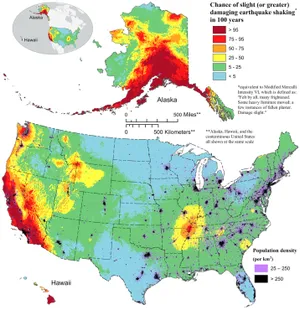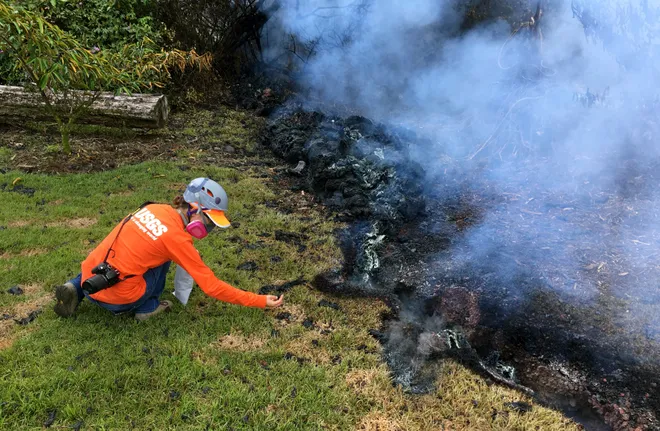What cities are most at risk of a strong earthquake? Here's what USGS map shows
The potential for catastrophic earthquakes to rock nearly every corner of the United States is becoming a growing threat, according to the U.S. Geological Survey.
By analyzing the newest seismic studies, historical geological data and other data-collection technologies, the agency put together a color-coded map that pinpoints exactly where earthquakes are most likely to strike. The latest model indicates that nearly 75% of the continental United States, as well as Alaska and Hawaii, could experience a damaging quake sometime within the next century.
The color-coded map – the USGS' first to include all 50 states – is meant to provide a visual to allow for geologists and engineers to prepare for the looming threats that exist to the nation's infrastructure, as well as hundreds of millions of Americans.
Published in the journal Earthquake Spectra, the findings "represents a touchstone achievement for enhancing public safety,” geophysicist Mark Petersen, the study's lead author, said in a statement.
Hawaii hiker rescued:Barking dog helps rescuers find missing hiker 170 feet below trail
Earthquakes likeliest along Atlantic Coast, California, Alaska
The most damaging earthquakes are likeliest to occur along the central and northeastern Atlantic Coast, which includes Washington D.C., Philadelphia, New York and Boston.
California and Alaska, two well-known earthquake hotspots, were also identified in the USGS study as being at a high risk for greater shaking in the decades ahead.
But it's Hawaii that has the greatest potential for a cataclysmic quake because of observations geologists made after recent volcanic eruptions and seismic unrest on the islands, the agency said.
See the earthquake map here:

The report additionally found that 37 states have experienced earthquakes greater than a magnitude 5 over the past two centuries, "highlighting a long history of seismic activity across this country," according to the Geological Survey.
Why the Geological Survey produced the earthquake map

Serving as the latest seismic hazard model since 2018, the map and accompanying study are meant to provide crucial insights for architects, engineers and policymakers as they design and construct buildings.
While the Geological survey said the study is not predicting quakes, scientists identified nearly 500 additional faults that have the potential to produce a damaging shake in the future.
"Earthquakes are difficult to forecast but we’ve made great strides with this new model," Peterson said. "The update includes more faults, better-characterized land surfaces, and computational advancements in modeling that provide the most detailed view ever of the earthquake risks we face."
Eric Lagatta covers breaking and trending news for USA TODAY. Reach him at elagatta@gannett.com

Disclaimer: The copyright of this article belongs to the original author. Reposting this article is solely for the purpose of information dissemination and does not constitute any investment advice. If there is any infringement, please contact us immediately. We will make corrections or deletions as necessary. Thank you.





